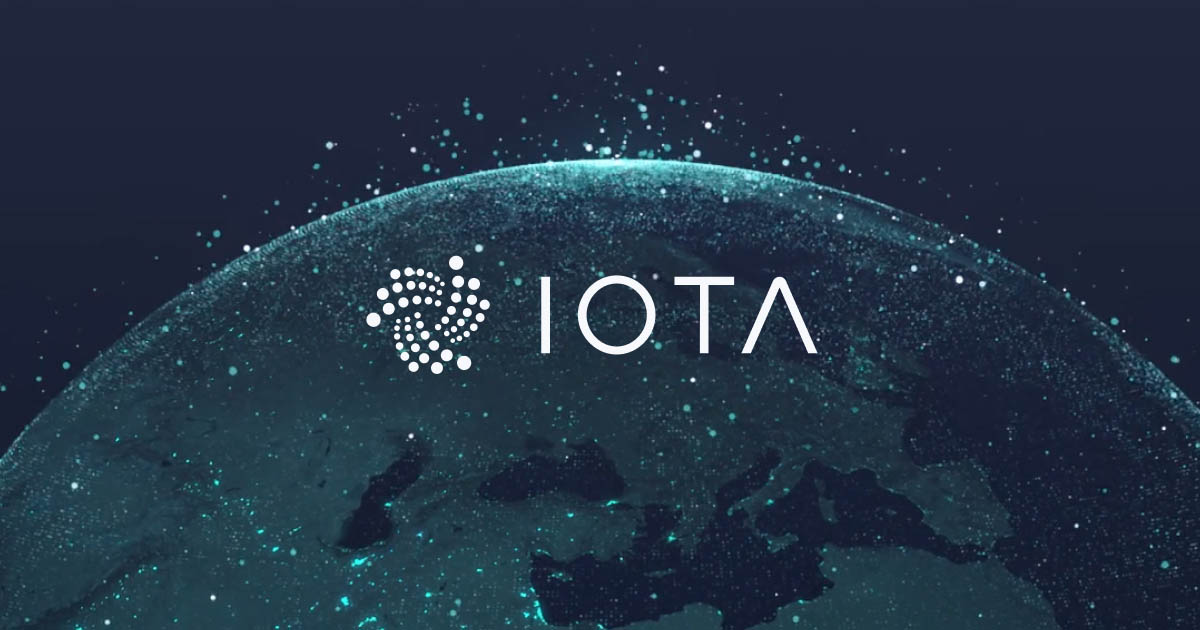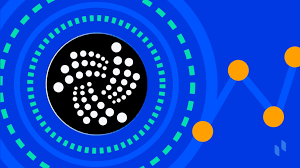
James Carter
What is IOTA?: Revolutionizing Distributed Ledger Technology for the Internet of Things

In today’s digital era, the Internet of Things (IoT) has emerged as a transformative technology, connecting numerous devices and systems to create a more efficient and interconnected world. As the volume of data generated by IoT devices continues to skyrocket, the need for a secure, scalable, and feeless infrastructure becomes paramount. This is where IOTA, a distributed ledger technology (DLT) designed specifically for the IoT, comes into play. In this article, we will delve deep into the world of IOTA, exploring its key features, working mechanisms, use cases, advantages, challenges, and its positioning in comparison to other DLTs.
Key Features of IOTA
Tangle Technology:
At the heart of IOTA lies its innovative Tangle technology, a Directed Acyclic Graph (DAG)-based data structure that replaces the traditional blockchain. The Tangle offers several advantages, such as scalability, high throughput, and parallel processing. Unlike blockchains that rely on miners, the Tangle requires each participant to validate two previous transactions, promoting a self-regulating network where all participants are actively involved in the consensus process.
Scalability:
Scalability has been a major challenge for traditional blockchain systems, leading to bottlenecks and high transaction fees. IOTA’s Tangle, on the other hand, demonstrates remarkable scalability due to its inherent design. As more transactions occur, the Tangle becomes more robust, enabling higher transaction throughput and increased network efficiency.
Feeless Transactions:
IOTA stands out from other DLTs by offering feeless transactions. Traditional blockchains rely on transaction fees to incentivize miners and secure the network. However, in IOTA, there are no fees involved, making it an ideal solution for microtransactions and facilitating the machine-to-machine (M2M) economy.
Quantum Resistance:
As the development of quantum computers progresses, the vulnerability of traditional cryptographic algorithms becomes a concern. IOTA addresses this challenge by employing quantum-resistant algorithms, ensuring the long-term security and integrity of data stored on the Tangle.
Data Integrity and Security:
Data integrity and security are crucial in IoT environments where billions of devices exchange sensitive information. IOTA utilizes cryptographic techniques to ensure the integrity and authenticity of data stored on the Tangle. Additionally, its distributed nature enhances security, as there is no central point of failure or single attack vector.
Internet of Things (IoT) Focus:
Unlike many other DLTs, IOTA has been specifically designed to cater to the unique requirements of the IoT ecosystem. Its lightweight nature and feeless transactions make it well-suited for small, resource-constrained devices. By providing a secure, scalable, and efficient infrastructure, IOTA enables seamless integration of IoT devices and fosters the growth of innovative applications.

How IOTA Works
Overview of the Tangle:
The Tangle is a DAG-based structure where each transaction is linked to two previous transactions, forming a web-like structure. This structure eliminates the need for miners, as each participant verifies two previous transactions when issuing a new one. This design fosters a self-regulating network with high scalability and throughput.
Transaction Validation:
To issue a transaction on the Tangle, a participant must validate two previous transactions by performing a small amount of Proof-of-Work (PoW). This validation process ensures the integrity and authenticity of the transaction and prevents double-spending.
Consensus Mechanism:
IOTA’s consensus mechanism is based on the principle of cumulative weight. Transactions with a higher cumulative weight are considered more valid and are more likely to be accepted by subsequent transactions. This consensus approach eliminates the need for energy-intensive mining and allows the network to reach consensus quickly and efficiently.
Proof-of-Work (PoW):
To deter spam and ensure a fair distribution of transactions, IOTA utilizes a lightweight PoW algorithm. Participants must perform a certain amount of computational work to validate transactions and attach them to the Tangle. The PoW requirement is designed to be computationally lightweight, making it feasible for even low-powered IoT devices to participate in the network.
Confirmation Confidence:
In traditional blockchain systems, transactions require multiple confirmations to achieve a high level of confidence. In IOTA, confirmation confidence is achieved through the cumulative weight of transactions. As more transactions approve a particular transaction, its confidence level increases, providing a reliable measure of transaction finality without the need for extensive confirmations.
Use Cases and Applications
Machine-to-Machine (M2M) Payments:
IOTA’s feeless and scalable infrastructure makes it an ideal solution for facilitating microtransactions between IoT devices. Machines can autonomously transact with each other in real-time, enabling new business models and revenue streams in areas such as smart grids, autonomous vehicles, and sensor-based data monetization.
Supply Chain and Logistics:
With the ability to securely record and verify transactions, IOTA finds extensive applications in supply chain and logistics management. It enables transparent tracking of goods, eliminates counterfeit products, optimizes inventory management, and facilitates seamless coordination between various stakeholders.
Internet of Things (IoT) Integration:
IOTA’s focus on IoT integration opens up a wide range of possibilities. It allows for secure and trusted communication between devices, enabling the creation of interconnected IoT ecosystems. Applications include smart homes, smart cities, industrial automation, and healthcare systems, where devices can securely share data and coordinate actions in real-time.
Data Marketplace:
IOTA enables the creation of decentralized data marketplaces, where individuals and organizations can securely sell and buy data. This unlocks the potential of data monetization while ensuring data privacy and ownership rights. Industries like research, data analysis, and artificial intelligence can benefit from access to a diverse range of high-quality data.
Decentralized Identity:
IOTA’s features can be leveraged to create decentralized identity solutions, empowering individuals to control and manage their digital identities securely. By eliminating the need for centralized identity authorities, IOTA enables self-sovereign identity, protecting privacy and reducing the risk of identity theft.
Smart Cities:
IOTA’s feeless and scalable infrastructure has the potential to transform cities into smart, efficient, and sustainable entities. Through IoT integration, data exchange, and automated transactions, IOTA can enable innovative applications in urban mobility, energy management, waste management, and citizen services, leading to improved quality of life for residents.
WATCH VIDEO BELOW
Advantages of IOTA
Scalability and High Throughput:
The Tangle’s inherent design provides high scalability and enables parallel processing of transactions. As the network grows, it becomes more robust, allowing for increased transaction throughput without sacrificing performance.
No Transaction Fees:
IOTA’s feeless transactions remove barriers for microtransactions and facilitate the M2M economy. This opens up new possibilities for innovative business models, micropayments, and efficient value transfer in IoT ecosystems.
Lightweight and Efficient:
IOTA’s lightweight design makes it suitable for resource-constrained devices, such as IoT sensors and actuators. It operates efficiently with minimal computational and energy requirements, enabling widespread adoption in IoT applications.
Secure and Immutable:
By utilizing cryptographic techniques and a distributed network, IOTA ensures the security and immutability of data stored on the Tangle. The absence of a central point of failure enhances the resilience of the network against attacks.
Quantum-Resistant:
IOTA’s adoption of quantum-resistant algorithms safeguards it against potential threats posed by quantum computers. This ensures the long-term security and integrity of data stored on the Tangle, even in the face of advancing quantum computing technologies.
Challenges and Limitations
Network Congestion:
While IOTA’s Tangle offers scalability advantages, the network may still experience congestion during periods of high transaction volume. Efforts are being made to optimize the Tangle’s performance and address potential congestion issues as the technology evolves.
Adoption and Ecosystem Development:
As with any emerging technology, widespread adoption of IOTA and the development of a robust ecosystem are ongoing challenges. Building partnerships, fostering developer communities, and creating user-friendly tools and interfaces are crucial for driving adoption and accelerating the growth of the IOTA ecosystem.
Regulatory Compliance:
As DLTs like IOTA gain traction, regulatory frameworks and compliance requirements are evolving. Adhering to legal and regulatory standards while maintaining the core principles of decentralization and privacy poses challenges that need to be navigated to ensure IOTA’s successful integration into existing industries.
Potential Security Risks:
While IOTA’s design offers security advantages, it is not immune to potential security risks. Ongoing research, rigorous testing, and continuous security audits are necessary to identify and address vulnerabilities as the technology evolves.
Scalability Concerns:
While the Tangle demonstrates scalability advantages, further research and development are needed to address potential bottlenecks and ensure seamless scalability as the network expands. This includes exploring solutions such as sharding and layer-two protocols to enhance scalability.
Comparison with Other Distributed Ledger Technologies
Bitcoin and Blockchain:
Compared to Bitcoin’s blockchain, IOTA offers several key distinctions. Bitcoin relies on miners and has transaction fees, whereas IOTA’s feeless transactions and Tangle technology make it more suitable for microtransactions and IoT applications. Additionally, IOTA’s scalability advantages provide higher transaction throughput.
Ethereum and Smart Contracts:
Ethereum introduced smart contracts, enabling the development of decentralized applications (dApps). While IOTA does not support smart contracts natively, efforts are underway to integrate IOTA with smart contract platforms like Ethereum. IOTA’s focus on IoT and feeless transactions sets it apart from Ethereum’s broader scope.
Other IoT-focused Projects:
Several other projects aim to address the unique requirements of IoT applications. However, IOTA stands out with its feeless transactions, scalability, and focus on lightweight IoT integration. Projects like IoT Chain, Waltonchain, and VeChain offer alternative approaches but differ in terms of their technology, architecture, and scalability.
Future Developments and Roadmap
Coordicide and Removal of the Coordinator:
Coordicide is a major upcoming milestone for IOTA, aiming to remove the Coordinator, which currently aids in network security. With the removal of the Coordinator, IOTA will achieve full decentralization, further enhancing security and autonomy within the network.
Integration with Other Technologies:
IOTA aims to collaborate and integrate with complementary technologies to enhance its functionality and applicability. This includes partnerships with IoT device manufacturers, smart city initiatives, and interoperability with other DLTs and traditional systems.
Partnerships and Collaborations:
IOTA actively seeks partnerships and collaborations with industry leaders, research institutions, and organizations to foster innovation and drive adoption. Collaborations in areas such as supply chain management, mobility, energy, and healthcare demonstrate IOTA’s potential for real-world impact.
Research and Innovation Efforts:
IOTA’s development team continues to focus on research, innovation, and community engagement. Ongoing efforts include exploring new consensus mechanisms, improving network performance, enhancing security measures, and encouraging open-source contributions.
Summary
IOTA’s unique design and focus on the IoT ecosystem position it as a promising distributed ledger technology. With its Tangle technology, scalability, fee less transactions, and quantum resistance, IOTA offers a robust infrastructure for secure and efficient data transfer and value exchange in IoT applications.
While challenges and limitations exist, such as network congestion and regulatory compliance, the IOTA Foundation and the community are actively working to address these issues and drive the technology forward. Through partnerships, ecosystem development, and ongoing research, IOTA is poised to make a significant impact on industries such as supply chain management, smart cities, and decentralized data marketplaces.
Latest
Technology
09 May 2024
Technology
19 Apr 2024
Technology
16 Jan 2024
Technology
31 Aug 2023
Technology
24 Jun 2023
Technology
24 Jun 2023













